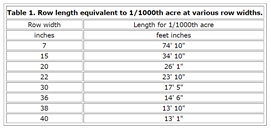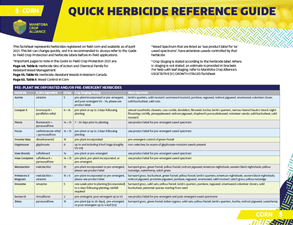Corn Emergence – Early Concerns

SPRING FROST:
Late May consistently brings early frost concerns in all crops. Corn is quite tolerant of temperatures below freezing because the growing point remains below ground until V6 approaches, however, if air temperatures dip below -2oC for more than a few hours, it is possible for the growing point to be damaged. See Is Corn Susceptible to Spring Frosts for temperature and scouting details following a spring frost event.
COLD BANDING:
Due to typical warming, followed by cooling spring temperatures as the corn crop was emerging, at VE and V1 staging it is possible to see cold banding on seedlings. As elongation occurs below the soil surface during warm conditions, a period of chilling can create a few growth issues. Most common is imbibitional chilling injury, which is the twisting or corkscrewing of corn mesocotyl as it is trying to emerge. This is when seed has imbibed (absorbed) the water required for germination and then the soil cools to temperatures below 10oC for prolonged periods. Cold banding is when air temperatures drop to 5 – 10oC and plants close to the soil surface get a yellow band across the leaf tissue. This is not cause for concern, but a common site at this time of year when temperatures bounce around.
PLANT POPULATION:
As the crop appears to be fully emerged in the late VE staging, it is a great time to do population counts to determine planting accuracy. Not all corn plants may have emerged at this stage, which makes timing appropriate. If the majority of the crop has emerged, a producer should be assessing what percent of the crop remains below the soil surface and why they are behind the rest of the crop. Dry soil, poor seed to soil contact, and consistent planting depth were all planting issues that have to be contended with in extremely dry planting conditions. Go out to the field and do some plant counts now to determine what may have gone wrong just a few weeks ago. Assessing a planting situation at harvest is not the time to learn from mistakes or environmental challenges.
To estimate plant population of emerged crop, determine the length of 1/1,000th acre using the table below (http://corn.agronomy.wisc.edu/AA/A033.aspx). Measure that distance out and count how many plants have emerged. Record the number. Repeat this 10 times at random locations to get an estimated average of final plant population.
WEED CONTROL:
The first in-crop herbicide applications can occur at VE in glyphosate-tolerant corn. Due to the dry conditions prior to May long weekend, weed emergence was slow. Following varying rainfalls, weeds will likely be germinating quickly now, so it will be important to stay ahead of weed pressure. See MCA’s Quick Herbicide Reference Guide to see what can be applied and when for certain weed spectrums. It is always recommended to refer to the herbicide label for complete information or Manitoba’s Guide to Field Crop Protection prior to all applications.



